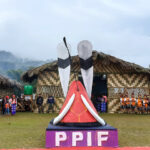According to the United Nations World Tourism Organization, tourism is a social, cultural, and economic phenomenon that involves the movement of people to countries or places outside their usual environment for personal or business/professional purposes. These individuals are called visitors (who may be either tourists or excursionists; residents or non-residents), and tourism revolves around their activities, some of which entail tourism expenditure.
In essence, tourism is the activity of traveling to different destinations for pleasure. It is a major industry that generates billions of dollars in revenue globally each year. Tourism can be local, domestic, or international, with various types of tourism and tourists.
It is not without reason that governments and organizations worldwide invest significantly in developing and promoting their tourism industries. Even in Nagaland, the state government is investing substantial capital and resources in promoting tourism. Unfortunately, there appears to be an imbalance in tourism infrastructure development. Observations indicate that tourism development and promotion in Nagaland are overly centralized, with almost everything controlled from Kohima. Additionally, tourism in Nagaland is unintentionally divided into three main circuits: the Dimapur-Peren-Kohima-Phek circuit, the eastern Nagaland circuit, and the Wokha-Mokokchung-Zunheboto-Longleng circuit. A significant portion of government investment in tourism development is allocated to the first circuit. While there may be justifiable reasons for this, the question arises: is it fair?
It is disheartening to note that the ongoing Cherry Blossom Festival of Longkhum has not received any support from the state government. The event is organized by the village community, a gesture that is highly appreciated. However, it is hoped that the government will provide support from next year, considering it is set to become an annual affair. Meanwhile, we hope that the village will look beyond organizing the festival to ensure its sustainability. Among other things, there is a need to plant more cherry blossom trees. The cherry blossom tree we find here is the wild Himalayan cherry, which is quite different from the Japanese sakura cherry. Our trees bloom in autumn, whereas the sakura blooms in spring, which is advantageous for our tourism.
Longkhum’s cherry trees were planted over 40 years ago, and it’s crucial to note that the average lifespan of these trees is around 40 years. This implies that most standing cherry trees are now past their prime. There seems to be a surge in enthusiasm in Longkhum for promoting tourism, with the entire community showing keen interest. This enthusiasm must be capitalized on; if Longkhum’s tourism succeeds, Mokokchung benefits. The multiplier effect of the tourism industry on the economy is enormous.



